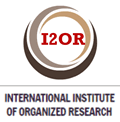Retinitis pigmentosa in Cuba
Keywords:
retinitis pigmentosa, prevalence, early diagnosis, genetic diseases, inbornAbstract
A retrospective observational research was conducted during the period 1990-2010 in order to determine the prevalence of retinitis pigmentosa in the Cuban population. The universe consisted of the 5 209 patients with retinitis pigmentosa who were screened and diagnosed by multidisciplinary groups located in the 14 Provincial Retinitis Pigmentosa Centers in the country. Each patient had a general and ophthalmology medical history, according to standards established by the Ministry of Public Health. The information needed to comply with the objectives was obtained from the national registry of patients at the Camilo Cienfuegos International Center of Retinitis Pigmentosa. To analyse the data, the prevalence rates of retinitis pigmentosa per 10 000 inhabitants per year were calculated for each province and for the country. The prevalence rate of the disease in Cuba was analyzed, and its variations in the period from 1990 to 2010. The prevalence rate obtained in 1990 was 1.40 per 10 000 inhabitants. In 2010, the rate was of 4,61 x 10 000, increasing its initial value at 3.21, which represented a 228.5% increase. In the period 1994-2010, there were a total of 2544 new diagnoses, comparing the 2665 patients diagnosed in 1994, for a prevalence of the disease of 1 x 4082, with 5209 patients screened so far in the country, for a current prevalence of the disease in Cuba of 1 x 2164. Results like this support the effectiveness of the multidisciplinary approach and of the family study as a method for the screening and early diagnosis of hereditary and dystrophic diseases of the retina, facilitated by the existence of a national network of centers and the total coverage and accessibility the Cubans have guaranteed with our health care system.Downloads
Downloads
How to Cite
Issue
Section
License
Authors who have publications with this journal agree to the following terms:
- Authors will retain their copyright and assign to the journal the right of first publication of their work, which will simultaneously be subject to a Creative Commons License / Attribution-Noncommercial 4.0 International (CC BY-NC 4.0) that allows third parties to share the work as long as its author and first publication in this journal are indicated.
- Authors may adopt other non-exclusive license agreements for distribution of the published version of the work (e.g., depositing it in an institutional repository or publishing it in a monographic volume) as long as the initial publication in this journal is indicated.
- Authors are allowed and encouraged to disseminate their work through the Internet (e.g., in institutional telematic archives or on their web page) before and during the submission process, which can produce interesting exchanges and increase citations of the published work. (See The effect of open access).





 december 15 2025
december 15 2025


